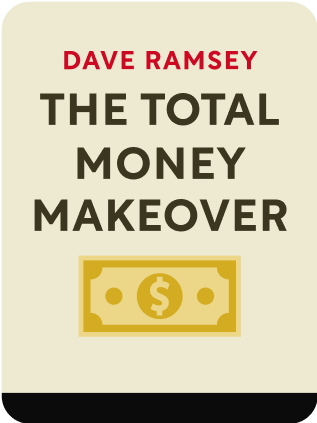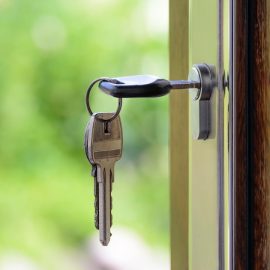

This article is an excerpt from the Shortform book guide to "The Total Money Makeover" by Dave Ramsey. Shortform has the world's best summaries and analyses of books you should be reading.
Like this article? Sign up for a free trial here .
What is the debt snowball? How does the debt snowball help you pay off debt quickly?
The debt snowball is a method for paying off debt. Using the momentum of a snowball, Dave Ramsey shows you how you can pay off your debts.
Read on for more about the debt snowball, Dave Ramsey, and financial health.
The Debt Snowball: Dave Ramsey Offers a Simple Strategy
The debt snowball method is the way to pay off debt. It’s easy to understand, but it takes effort and commitment to pull it off. Tens of thousands of Total Money Makeover converts have proven it works. There are two steps:
1) Make a list of your debts, in order from the one with the smallest balance to largest. Exclude only your mortgage, which will be addressed in another step, described in Chapter 11. A form is available for downloading here.
2) Each month, apply every extra dollar you have to the smallest debt until it’s paid off. Make the minimum payment to stay current on all other debts.
After the smallest debt is paid, apply the payment you had been making on it, plus any additional money you have, toward paying off the next smallest debt. When the second debt is paid off, apply the payment amounts from the first two debts, plus any other money you can find, to the third debt on your list, and so on.
Each time you pay off a debt, you increase the amount you can pay on the next one—your payments continue to snowball until your debts are paid off.
Starting with the smallest debts gives you some quick wins to motivate you, and by the time you get to the largest payments, such as car payments and student loans, you’re in a position to pay over $1,000 a month. You’ll soon be debt-free except for your mortgage with the Dave Ramsey snowball method.
Questions and Answers
1) What if you’re in such dire financial straits that you can’t come up with any extra money to apply to your smallest debt and start the snowball rolling?
You’ll need to take drastic action to start the Dave Ramsey snowball method. Sell whatever possessions you can get money for: a motorcycle, antiques, collections, baseball cards, or an extra car not used for daily work. If you’re selling a car, choose the one with the most debt. If you have more than a year and a half to pay on a car, sell it. After your Total Money Makeover, you’ll be able to pay cash for the car you want.
Remember your goal is to sacrifice—live differently from everyone else—now, so you can live the way you want to later.
There’s one other way to get a debt snowball rolling: increase your income by working extra hours at your job or taking on an additional job temporarily.
2) While working on a snowball, should you stop contributing to a 401(k), even if you get a company match?
Continuing your contributions, especially to get the company match, might seem like a good idea, but focused intensity on eliminating your debts is more important at the moment. If you are radically focused, you’ll become debt-free and can resume your contributions in a few months. In addition, without your debt payments, you can contribute more to your 401(k).
Keep making your contributions only if you’re in an extremely deep hole that will take you longer than 18 months to get out of.
3) If you need to draw on your emergency fund, should you stop your debt snowball method to rebuild your fund?
Yes, you should go back to making minimum payments to stay current on all your debts, and focus on rebuilding your emergency fund to $1,000. If you don’t, you won’t be ready for the next emergency and will be tempted to use credit. When you’re finished rebuilding the fund, you can start your debt snowball again.
4) Should you include a home equity loan in the Dave Ramsey snowball method?
If your home equity loan exceeds half your annual income, don’t include it in a debt snowball, Dave Ramsey says.
For example, if you make $40,000 a year and have a $15,000 home equity loan, include it in your debt snowball and pay it off. But if your second mortgage is $35,000 compared to a $40,000 income, you’ll need to handle this in another money makeover step.
If you have small-business debt, it’s probably personally guaranteed, meaning it’s personal debt,
whether it’s a small-business loan or credit card debt incurred for the business. Include it in your debt snowball.
If you have loans on rental property, exclude them from your debt snowball, but stop buying property. After you pay your home mortgage in step 6, use the debt snowball method to pay off your rental mortgages from smallest to largest; also consider selling some to pay off other debt.
The debt snowball may be the most important step in your Total Money Makeover because:
- It frees up your income so you can build wealth.
- It signifies that you’re rejecting the consumer culture of buying what you can’t afford.
- It indicates you’ve had a change of heart about money that sets you up for success in your Total Money Makeover.

———End of Preview———
Like what you just read? Read the rest of the world's best book summary and analysis of Dave Ramsey's "The Total Money Makeover" at Shortform .
Here's what you'll find in our full The Total Money Makeover summary :
- The 7 steps to achieving financial stability (you'll love #7)
- A fool-proof plan for becoming debt-free
- How myths about debt and money are crippling your financial health






